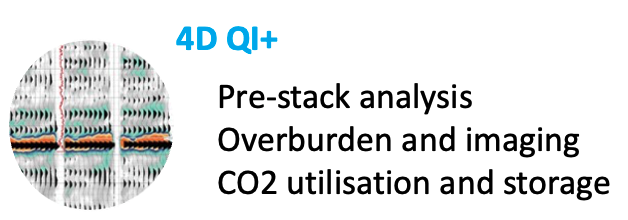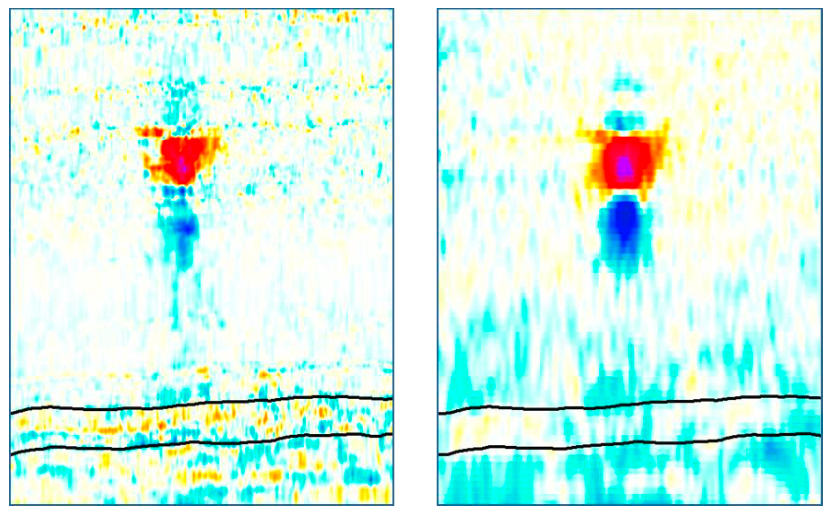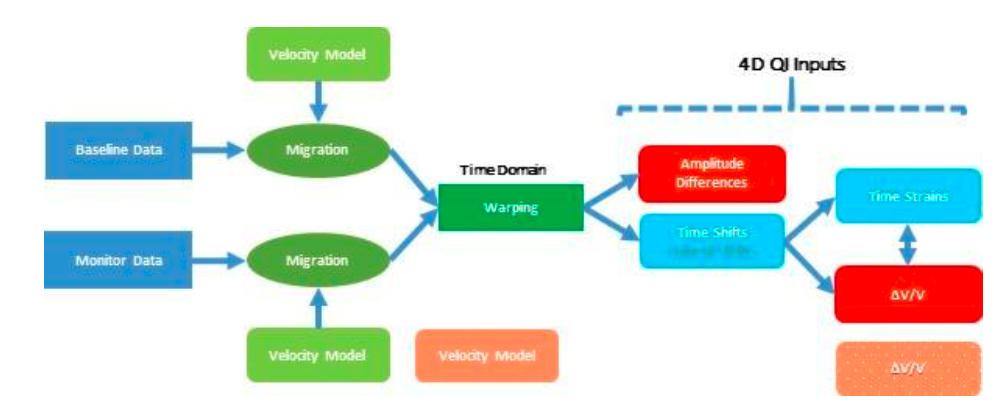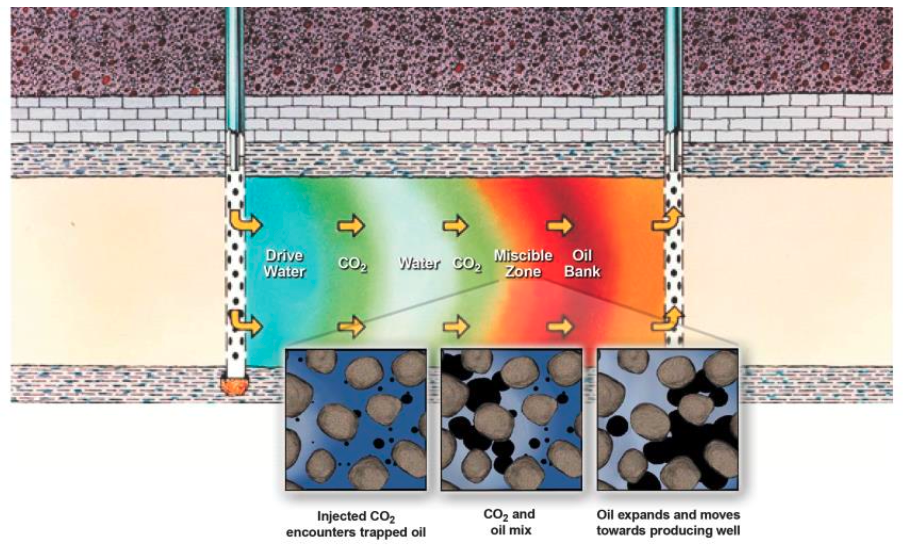research Research programme Module 1
Module 1

4D QI is now recognised as a major discipline in Geophysics. However, we believe current understanding is incomplete and many projects are driven by anecdotal or popularist belief rather than having a firm scientific foundation. Inter-disciplinary links in particular remain weak and disconnected. To continue to develop a truly quantitative analysis, we intend to review and build tools for QI based on the ETLP approach. This module therefore promotes two major research threads that underpin many of our preliminary quantitative analyses: pre-stack analysis and the effects of the overburden on 4D imaging. It also includes for the first time the new sub-topic of CO2 utilisation and storage, a subject of increasing importance within industry. Over the years, ETLP has worked on several CO2 projects outside the consortium, but now sees a need to include this in our mainstream programme. Our first topic considers the need to develop practical solutions to analyse large data volumes of pre-stack data in an efficient manner. The second topic investigates the impact on 4D imaging of overburden geomechanics, stacked thin reservoirs, sub-salt reservoirs, and the effect of an overlying producing reservoir. The final topic examines the application of our 4D tools and methodologies in understanding CO2 injection for EOR and also for long term storage in the shallow subsurface. Research in these areas in the literature is growing but lacks good practical examples.
Pre-stack 4D analysis
Over the past two decades we have already assessed the role of restricted offset stacks for pressure-saturation separation (Corte et al. 2019), determined the value of post-stack time-shifts in identifying stress changes in the overburden (Jaramillo et al. 2018) and saturation plus pressure changes within the reservoir zone. The use of restricted offset- stacks is also proposed in attempts to separate subsurface displacements from velocity changes (for example, Ghaderi and Landrø 2009), with varying degrees of success in practice. Common offset images have also helped to detect discrete anomalies in the overburden (Røste et al. 2014, Dvorak and MacBeth 2019). As we push for more understanding, adding value and finer-scale detail from seismic, it is natural to ask questions of the full pre-stack data in terms of amplitudes, time-shifts or full waveforms. Pre-stack data provides access to more accurate information prior to the final stack, whilst post-stack amplitudes and time-shifts can be distorted. Can we work with these large volumes? Are the time-lapse changes visible above the noise levels and can they be translated into impact beyond conventional practice? What stage in the pre-stack workflow should we access in order to make a sensible estimate: Pre-RMO, post-migration, pre-migration? In Phase VII we investigated the added benefits of using time-shift variation with offset (TVO) and also 4D time-shift tomography (Nguyen et al. 2017; Dvorak and MacBeth 2018). This immediately brings us towards the concept of 4D waveform tomography and perhaps fast-track full waveform inversion. A number of solutions exist which we must investigate, compare and contrast – always guided of course by the available data. Finally, data science should also be considered to analyse the larger pre- stack datasets for production-related changes.
Themes include:
• Time-shift variations with offset
• Pre-stack waveform analysis
• Fast and effective 4D seismic tomography
• Coupling of amplitudes and time-shifts
• Thickness versus velocity changes
• Data analytics methods
It is our intention to package the above into a series of practical projects that apply directly to several field datasets and our PhD students.

Overburden and Imaging
This sub-module links with the pre-stack research, as it involves the role of the complex overburden on our 4D signals and ability to understand the fine-scale dynamic reservoir signals (velocity changes and amplitudes, and hence stresses and saturations). Here we define the overburden as changes in the geology above the reservoir that impact our ability to adequately resolve the producing reservoir of interest. The aim is to tackle each scenario by a combination of modelling, inversion and imaging study, and field data analysis. A comparative study of various methodologies which aim to emulate the true physics of wave propagation will also be carried out and analysed for reward versus effort. We have identified a number of key scenarios:
(a) Geomechanical effects in the compacting reservoir creating changes in the overburden velocity and hence focussing/de-focussing of the seismic wavefield reflected from the producing levels. We believe these effects will be particularly prominent in HPHT and compacting chalks reservoirs, where overburden stretching is clearly observed (Bourne and Hatchell 2005, Jones et al. 2017, Jaramillo et al. 2019). This topic grew during Phase VII (for example Dvorak and MacBeth 2019) and will continue to be actively researched in Phase VIII.
(b) As production from more challenging geological settings becomes possible, fields with thick sequences of stacked, interbedded reservoirs with varying degrees of connectivity are being considered (for example Tatanova et al. 2018). For practical considerations reservoir layers are produced in a staged development according to STOIIP estimates and reservoir quality. This creates multiple changes and complex 4D signals that overlap pressure and saturation effects, include attenuation effects and sidelobe interferences with variable geology and offset dependency. In this context the impact of overlying reservoirs on producing reservoirs below must also be addressed. Our aim is to isolate several key fields with these effects for our imaging studies, and apply methods developed to identify the individual effects of production.
(c) Our third focus is reservoirs in complex structural settings, where the overburden may create an uneven illumination and interfering residual multiple energy. Of particular interest here are pre-salt reservoirs in the GoM and Campos Basin which challenge 3D imaging, but for which 4D signals have been extracted (Rosa et al. 2018). The effect of such an overburden on sim2seis, which has been shown to be significant in past work by a number of authors (Doyen et al. 2005 in inversion, Domes et al. 2010 in modelling). We need to incorporate the effects of the overburden on our quantitative 4D interpretation as this influences the changes we see at the reservoir level (in amplitude, phase or time-shift), particularly as we push for greater quantitative perfection.
Field data are available for scenarios (a) and (b), and projects are already progressing. Choices for 4D analysis are considerable, and include conventional post-stack, 4D time- shift tomography, image domain tomography, joint migration inversion (Qu 2020), re- migrations (as per Chen et al. 2014), 3D warping hence residual migration (Hall et al. 2002), 4D full waveform inversion, …and more. Ideally re-migration should be the default but closing the loop in this domain is too expensive and faster options are sought.
Summary of specific themes:
- Geomechanicals effects in the overburden
- Complex 4D signals from stacked reservoirs
- Impact of image distortion due to the overburden
- Salt overburden and impact of geometry
- Comparative studies
- Modelling of field scenarios
- Development of wave-physics based methods for estimating fine-scale velocity changes

CO2 utilisation and storage
The capture of CO2 and its use in industry for enhanced oil recovery (for example, the Permian in the USA and North Sea in the UK, but also worldwide) or storage via permanent geological sequestration is an important issue when offsetting our carbon footprint whilst enhancing existing business models. In this sub-module we consider both components of this problem:
- One of the largest industrial uses of produced CO2 is for EOR, where the pressurised gas displaces remaining hydrocarbon gas or oil. CO2 injection may lead to miscible (more efficient) or immiscible displacement. CO2-EOR is a tertiary recovery process and is mostly successful in oil fields when attempting to displace the significant amount of oil remaining from secondary recovery. A careful monitoring of CO2, whether injected continuously or in a tapered/WAG sequence, is required to adequately identify optimal movement of the fluid front, adjust injection wells for optimal well production, and ensure integrity of the initial design. This is especially true when the subsurface geology is complex. Specific areas for research include:
- Compositional versus black oil, fluid properties in a reservoir undergoing production and recovery, and the associated PEM and sim2seis modelling
- Pressure-saturationestimation:gassaturation,distributionandmigration;fine- scale geology from outcrops; pressure sensitivity effects
- Thin interbedded reservoir areas with stratigraphic complexity – shale/sand, laterally extensive cemented sands
- CO2 fluid-rock interactions, impact on the 4D response
- Changes to our modelling codes to accommodate the above developments
- Seismic history matching and model updating

- CO2 storage in porous geological formations is typically several kilometres below the earth’s surface in supercritical phase. The main issues relate to containment of the fluid and understanding the fluid flow in the reservoir (conformance). Much has been learnt from projects such as Sleipner field over the 20 years of its operation. Here injection is into a saline aquifer of the highly permeable and porous Utsira formation (Fürre et al. 2017). There are implications in terms of reservoir understanding, acquisition and processing methodologies. Frequent monitoring using 4D seismic has proven to be a useful tool for imaging plume development and detecting small CO2 saturations and hence leakage. Sites such as Sleipner are well founded with over 150 journal papers published on various aspects of the site monitoring programme. The data from Sleipner are now publically available and have been accessed to determine the suitability for our programme. We hope to access also additional datasets. Specific challenges may include: leakage assessment, fine-scale model update and inversion, geomechanical effects including the role of pressure changes for monitoring purposes. ETLP aims to test a range of tools in our toolbox on these data for the purposes of benchmarking against the existing knowledge. Specific tools are related to 4D inversion, pressure and saturation estimation (deterministic, stochastic and machine learning), analysis of geomechanical effects, and seismic history matching (also with machine learning). Checks will be made against existing fluid flow understanding, inversion and subsurface characterisation. The aim is to extend this learning to new datasets when the opportunity arises. This work will also likely to run across the activities of both Modules 2and3.
